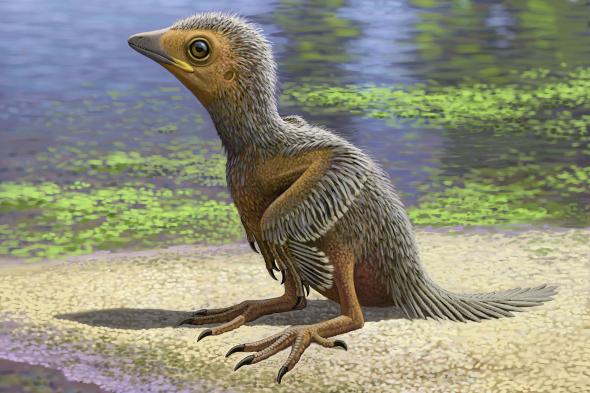Scientists believe they’ve uncovered a baby bird fossil that’s 127 million years old. They also believe that the find is giving them new insight into how prehistoric birds evolved in the Age of the Dinosaurs. A researcher from the University of Manchester led the study of the baby bird fossil and published their findings in the journal Nature Communications.
The scientists who studied the baby bird fossil say it dates to the Mesozoic Era, which they say was 250 million to 65 million years ago. Not many bird fossils from this time period have ever been found, so the researchers are describing their find as “the rarest of the rare.” The researchers also said that the fossil is one of the smallest bird fossils from the Mesozoic Era ever uncovered, measuring less than 5 centimeters in size. They estimate that the bird would have weighed a mere three ounces while it was alive.
The researchers also said that the fossil is important because it’s a bird that died not long after being born. The early days are the most important when it comes to the formation of a bird’s skeleton. As a result, researchers say that finding a fossil of a baby bird that didn’t live very long gave them an opportunity to analyze its development and bone structure. By studying the bird’s bone development, they expected to learn about whether it could fly at the time it died, if it was dependent on its parents at the time, and whether it would have been able to survive by itself right after it hatched.
The fossil represents almost the entire skeleton of a chick from the enantiornithine family of prehistoric birds. Most of the bids in this family had claws on their wings and teeth, scientists believe. Other than those features, however, they say prehistoric birds looked very much like today’s birds.
The fossil was uncovered in Spain at the well-known Las Hoyas site years ago, but researchers haven’t really studied it until now. In fact, the methods they used to study it hadn’t yet been developed at the time the baby bird fossil was found, the researchers added.
Because of the tiny size of the baby bird fossil, the researchers used synchrotron radiation to capture images of it at a “submicron” level. This enabled them to see each of the bones’ “microstructures in extreme detail.” The research team used synchrotrons in the U.S., the U.K. and France during their study.
One of the things they noticed about the baby bird fossil was that the creature’s sternum was still mostly cartilage when it died. That means the bird probably wasn’t yet able to fly. However, the scientists also said that this doesn’t necessarily mean that the bid was totally dependent on its parents, as some modern birds are now after hatching. Even today, some birds are extremely dependent on their parents after hatching, while others are more independent. The researchers characterize this as a “spectrum,” with some species of birds all along the spectrum from total dependence to total independence after hatching.
Something else the researchers noted about the baby bird fossil was how many features found in today’s birds were already developed over 100 million years ago.





